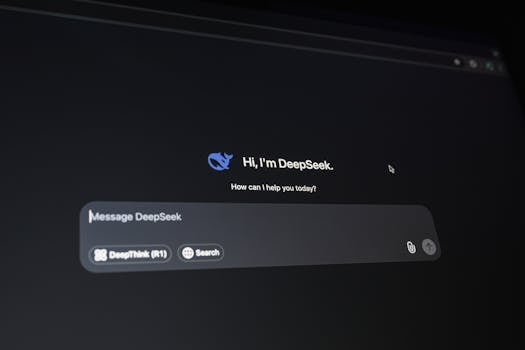Technology
Future Trends in App Design: What to Expect by 2025
Advertisement
App design is constantly evolving. In the coming years, clear trends will emerge that will profoundly influence the way we interact with technology. By 2025, the user experience will be further optimized and enriched by emerging innovations and practices.
Users expect more than just having their basic needs met. They are looking for an engaging and intuitive experience, where aesthetics and functionality go hand in hand. This quest for user-centered design will guide design choices for years to come.
The adoption of new technologies such as artificial intelligence and augmented reality will also shape these trends. These advances will not only transform the way apps look, but also how users interact with them.
1. Minimalist User Interfaces
The first trend that stands out is simplicity in interfaces. Minimalist design has been gaining traction, helping users focus on essential functions. With fewer distractions, interaction becomes more fluid.
Apps with a clean, organized look make navigation easier. Unnecessary elements are eliminated, allowing users to focus on what really matters. This approach brings efficiency and clarity to the user experience.
Additionally, well-chosen typography and a harmonious color palette contribute to an attractive design. The use of white space helps create a visually pleasing environment, making interaction more enjoyable.
Brands that embrace minimalism in their apps also demonstrate modernity and sophistication. This trend reflects a growing preference for digital experiences that are not overloaded with information.
In the next decade, minimalist design will become even more prevalent, with apps striving to meet user expectations and create memorable experiences.
2. Artificial Intelligence Integration
Artificial intelligence (AI) is changing the way we design applications. By 2025, AI is expected to be an essential part of design, enabling advanced customizations. Interactions will become more intuitive.
Apps that use AI can learn from user behavior, offering suggestions and personalizations. This results in a richer, more engaging experience, where the app adapts to each user’s individual needs.
Chatbots and virtual assistants will become commonplace, providing instant support and improving customer service. This technology will enable users to have an interactive and accessible experience, contributing to overall satisfaction.
Additionally, data analysis using AI will provide valuable insights into app usage. This data helps developers make informed decisions about future improvements and updates.
Thus, integrating AI into apps is not just a trend but an expectation of modern users. It will make apps smarter and more responsive to their needs.
3. Augmented and Virtual Reality
Augmented reality (AR) and virtual reality (VR) are becoming increasingly popular in app design. By 2025, these technologies are expected to transform the way we interact with digital. They will introduce new possibilities.
AR allows you to overlay digital information on top of the real world, creating more immersive experiences. Shopping apps and gaming are examples of areas where AR can enhance the user experience by making it more interactive.
On the other hand, VR offers total immersion. In virtual environments, users can explore digital worlds intuitively. This immersion can be applied to gaming, education, and even corporate training.
However, to fully leverage these technologies, designers will need to create user-friendly interfaces. Simple navigation will be crucial to ensuring that users feel comfortable using AR and VR.
Therefore, AR and VR have the potential to revolutionize the way applications work, providing experiences that go beyond the conventional. This trend is just beginning.
4. User Experience (UX) in Focus
User experience will continue to be a top priority in app design. In 2025, companies will focus on creating seamless and enjoyable user journeys. User research will be a key part of this approach.
User-centered design isn’t just about aesthetics; it involves understanding the needs and desires of your users. Continuous feedback will help improve the functionality and overall experience of your apps.
Additionally, accessibility will be an important aspect to consider. Apps that are intuitive and accessible to all users will strengthen brand reputation and increase customer satisfaction.
Trends like micro-interactions and subtle animations will also contribute to a richer user experience. These small interactions make navigation more enjoyable and reinforce the emotional connection with the app.
In this way, the emphasis on user experience will ensure that applications stand out in an increasingly competitive market, reflecting a commitment to quality and satisfaction.
5. Responsive and Cross-Platform Design
With the diversity of devices available, responsive design will become the norm. By 2025, apps that adapt their interface to different screen sizes will provide a consistent experience for users.
Designers will need to consider multiple platforms, including smartphones, tablets, and desktops. This will ensure that all users have access to the app’s functionality regardless of the device they use.
Additionally, development frameworks that facilitate the creation of cross-platform versions will gain popularity. Applications developed in an integrated manner will provide a more cohesive experience, strengthening user loyalty.
Responsive design also improves your app’s SEO, contributing to better visibility in app stores and search engines. Therefore, investing in responsive design is crucial for long-term success.
Thus, responsive and cross-platform design will be key for applications to adapt to an ever-changing technological world, maximizing usability and engagement.
6. Sustainability in Design
Sustainability is becoming a growing concern, even in app design. By 2025, designers are expected to adopt practices that promote energy efficiency and responsible use of resources.
Applications that optimize performance and consume less battery will be valued. Therefore, the design must align with sustainable principles, contributing to reducing the environmental impact of technology.
This sustainable awareness will be reflected in the choice of colors, typography and even animations, which must be designed in a way that minimizes the use of device resources.
Furthermore, encouraging conscious consumption through apps will become a trend. Many developers are creating solutions that help users adopt sustainable practices in their daily lives.
In this way, sustainability in design will become an essential part of the brand strategy. This not only meets consumer demand but also helps build a more conscious world.
7. Deep Personalization
Personalization will be a strong trend in app design in 2025. Users expect experiences that cater to their individual preferences, making each interaction unique. This will involve various personalization techniques.
Using data and analytics will allow apps to adapt their content, layout, and functionality based on user behavior. This customization will increase customer engagement and satisfaction.
Brands that implement these strategies will have a competitive advantage by creating a deeper emotional connection with their users. This relationship is crucial in a saturated digital market.
Furthermore, personalization will not be limited to visual aspects. Features such as content recommendations and user-tailored notifications will become increasingly common, enhancing the overall experience.
Thus, deep personalization will become a pillar for application design, allowing users to feel more connected and engaged with the solutions they use.
Conclusion
The evolution of app design in 2025 is centered around user interaction and experience. As new technologies emerge, understanding and meeting user expectations will be crucial.
The aforementioned trends, such as minimalist design, AI integration, and deep personalization, will shape the way we plan and develop digital solutions. These are essential to stand out in the market.
Therefore, believing in user-centered design will ensure that applications not only meet but exceed expectations. Thus, the future of design is full of exciting opportunities.
Trending Topics

Couponeria: Pay Less on Your Online Shopping
Cuponeria: Find coupons, promotions, and cashback at thousands of stores. Save quickly, easily, and for free!
Keep Reading
Check Your CPF Online: Keep Your Name Clean
Check your CPF online safely and keep your finances up to date. Avoid unpleasant surprises and protect your financial reputation.
Keep ReadingYou may also like

Salt: Meet the App to Find Love with Christian Values
Salt is the ideal app for Christians looking for serious relationships, with security, personalized filters and a community of faith.
Keep Reading

